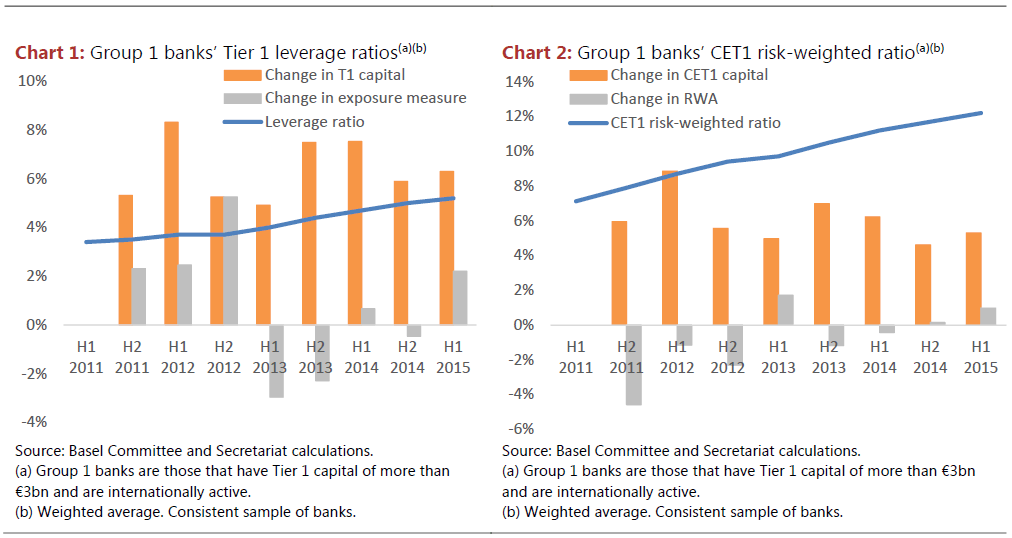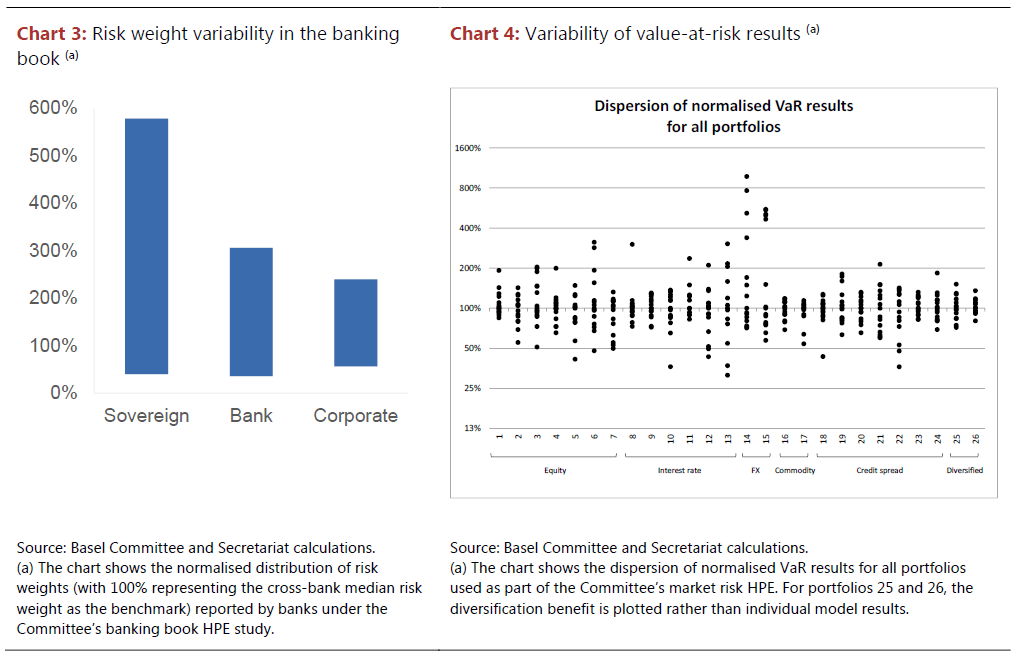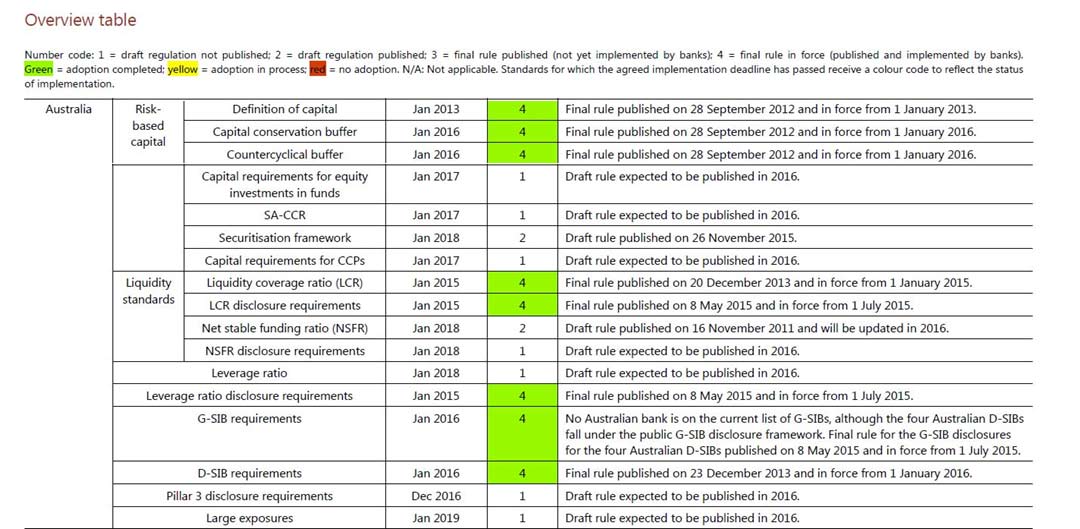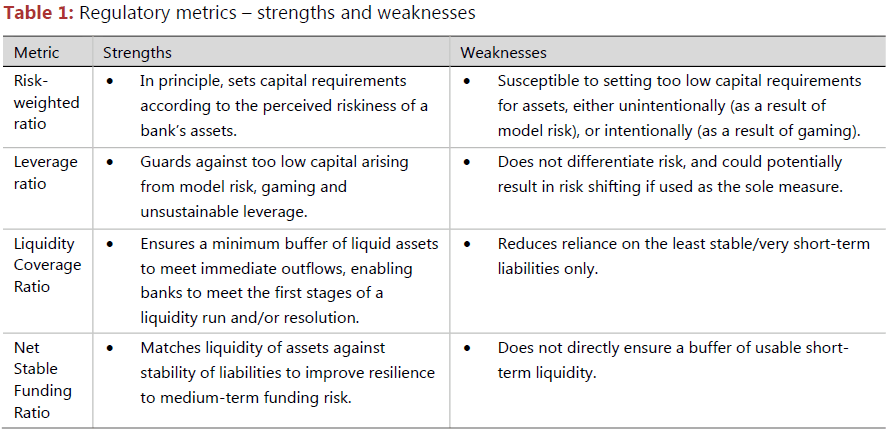Introduction
Good morning, and thank you for the opportunity to participate in this summit. It is a pleasure to be in Sydney. I would like to thank the Financial Review for inviting me to be part of this event, which is indeed timely, since the Basel Committee aims to finalise a number of important regulatory reforms this year.
This morning I will say a few words about our recent proposals and outstanding reforms. I will describe the approach we are taking towards finalising the global regulatory framework. Our goal, as always, is to promote a safe and sound banking system, which is critical to ensuring sustainable economic growth. Australia’s economic growth record over the past two decades is the envy of many. As is the stability of its banking system. But, as regulators, our focus is invariably on the downside risks rather than the upside. And as we have learned from the all-too-frequent episodes of banking distress that have occurred throughout the world – increasing bank resilience in good times is the most efficient and effective way of dealing with periods of stress, which inevitably occur.
Building bank resilience is of course linked to the issue of capital. I will therefore offer a few thoughts on the subject of the level of bank capital. While critically important, regulatory capital is not, however, the sole focus of regulators. Strong supervision is essential and, above all, bank’s internal risk measurement and management are paramount. I will conclude with a look at some other areas where we need to bridge gaps to ensure resilience and profitability over the long term.
The Basel framework as a bridge
A bridge is an apt metaphor for the Basel framework, especially here in Sydney, with the celebrated Harbour Bridge only a few hundred metres away. Bridges must be safe and sound. A safe and sound banking system is exactly what the Basel framework aims to support. Bridges facilitate movement, commerce and trade. The financial system plays a crucial role in directing investment and funds between individuals and businesses. Bridges are complex to design and build. They must be sympathetic to their surroundings and their design and construction rely on the expertise of many parties. Global cooperation between regulators, duly recognising individual circumstances, is the Basel Committee’s tried and tested way of working. And, once complete, international prudential frameworks for banksdeliver benefits for all, as do strong bridges.
As strong bridges bring prosperity, weak bridges can undermine it. A weak bridge jeopardises the safety of those crossing it, and may create wider problems for society at large. A loss of confidence in a structure or its builders shakes confidence in every similar structure. These knock-on effects can be severe and persistent. So it is essential that a bridge, like the Basel framework, is built to last.
We must also not forget the importance of regular maintenance. The Harbour Bridge opened with four traffic lanes but now has eight, together with a complementary tunnel. Some parts are repainted every five years, while others last as long as 30 years. We face the same imperatives with the Basel framework. Maintenance does not imply re-opening every previous decision; we understand the importance of stability and certainty. But it does mean staying vigilant to market developments and keeping in mind the increasingly widespread use of the Basel framework.
Finalising global regulatory reform
The major outstanding topics that we will finalise this year relate to credit risk and operational risk. The Basel Committee recently published proposals on revising these two areas of the regulatory framework. Earlier this year, we finalised the regulatory capital framework for market risk.
One of our main goals this year is to address excessive variability in risk-weighted assets modelled by banks. Some – not us – have already dubbed these reforms “Basel IV”. I do not think the title in itself is important but I note that each moniker bestowed on the global regulatory framework was characterised by a substantial change from the earlier version. Basel II was a significant departure from the Basel I framework; while Basel III was a vastly different set of rules again. The current set of proposed reforms are meant to revise elements of the existing framework rather than introduce new ones. As such, I would not refer to these revisions as constituting “Basel IV”.
At the end of last year, the Committee consulted on proposals to revise the standardised approach for credit risk. This is the approach used by the vast majority of banks around the world. The Committee’s objective was to promote, as much as possible, the standardised approach as a suitable alternative to the modelled approaches. The standardised approach is of course also relevant for banks using internal models, as it may form the basis for an “output floor”, should the Committee decide to adopt such a floor. An output floor would cap the amount of capital benefit a bank using an internally-modelled approach would receive vis-à-vis the standardised approach. The Committee is still considering the specific design and calibration of an output floor.
The Committee recently consulted on revisions to operational risk and the internal ratings-based approaches for credit risk. For operational risk, our proposal did not include a modelled approach. While internal models are an essential part of risk management for many banks, the question is what role they should play in prudential rules. This is particularly relevant for operational risk. The Committee’s recent proposals to calculate capital for credit risk do not eliminate the use of models but place additional constraints around their use for regulatory purposes. I would emphasise the word “additional” – the kinds of constraint that have been proposed already exist in some form in the capital framework. Before we finalise the standards by the end of this year, we will analyse comments and conduct comprehensive quantitative impact studies (QIS).
The resources required to conduct these QIS exercises at banks and supervisory authorities are extensive. The appropriate level of minimum regulatory capital is a central question and we have a dedicated task force that is looking specifically at the calibration of the capital framework. We are tackling this question from the perspective of each individual policy on the table this year but are also taking an aggregate, overall view.
What is the right amount of capital?
Many people think that the Basel framework is all about capital. In many ways, they are right. For the past 25 years, the foundation of the international approach to the prudential regulation of banks has been a risk-based capital ratio. With respect to regulatory capital adequacy, there are two factors to consider: first, what counts as capital; and, second, how much of it do you need.
With Basel III’s definition of capital reforms, the Basel Committee took a great stride towards answering the first question. There is now, I think, a consensus that Common Equity Tier 1 is the most important component of capital, though with an acknowledgement that some other financial instruments may have a role to play in certain circumstances. Charts 1 and 2 show that banks have made very good progress in adjusting and increasing their core capital base. Banks’ leverage ratios and risk-weighted ratios have increased since the global financial crisis, with most of this increase stemming from banks augmenting their capital resources.

The level of capital is a more difficult question. There are many views on what the “right amount” should be. Banks, investors, rating agencies, depositors and regulators all have a different perspective on what is optimal. Even within groups there are different perspectives. Inside banks, loan officers, traders, risk managers and senior management may respond to capital requirements in different ways. And different regulators have different views on the question of how much capital is the right amount.
At the Committee, we work hard to bridge these different perspectives and to come to a consensus on a prudential framework of minimum standards that support a level-playing field for internationally active banks while also ensuring their resilience across financial cycles.
The Basel Committee’s view of capital
From the Basel Committee’s viewpoint, we define minimum requirements and do not try to answer the question of what is the optimal level of capital. Instead, we try to answer a slightly different question: “Is bank capital enough to ensure safe, resilient banks that perform better in the longer term?”
The banking sector has raised capital levels significantly. But there are still some gaps in the framework, which we will bridge by year-end. Some stakeholders seek short-term fixes, with some investors (and perhaps others) taking an unhealthy, if understandably myopic, view of bank performance and resilience. Our focus is on a far longer term. The process of devising international regulations is not well suited to delivering the quick fixes that are sometimes sought. Basel standards are minimum standards that support a sound banking system at all stages of the financial cycle. There will be circumstances, related to an individual bank, jurisdiction or financial cycle, that warrant having more capital than the minimum. For example, Australia has signalled its desire for its banks to be “unquestionably strong”, with Common Equity Tier 1 ratios in the top quartile of the benchmark set by peers. Other jurisdictions have also adopted regulations that are more stringent than the Basel standards. While we do not intend to significantly increase overall capital requirements, this does not mean avoiding any increase for any bank. And, as I said, it does not preclude individual jurisdictions from imposing higher standards.
I noted earlier that a risk-based capital ratio has underpinned our framework for a quarter of a century. This is, at heart, a simple concept: the amount of capital needed for a given activity should reflect the risk of that activity. The higher the risk, the higher the capital. This principle of risk-sensitivity is still very important to the Committee but it is not the only consideration.
The 1988 Basel I framework had limited risk-sensitivity. This sensitivity increased over time. Basel II allowed considerable use of internal models to determine capital requirements. In principle, internal models permit more accurate risk measurement. But, if they are used to set minimum requirements, banks have incentives to underestimate risk. Several studies have found substantial variation in risk-weighted assets across banks. For example, Charts 3 and 4 show the range of risk weights estimated by banks in hypothetical portfolio exercises we conducted on the banking and trading books. Complexity in internal models, banks’ choices in modelling risk parameters and national discretions in the framework have all contributed to this variation. However, I think it’s fair to say that the wide discretion provided to banks in the current framework is likely a major driver of this high degree of variability.

Such variation makes it difficult to compare capital ratios. Basel’s Pillar 3 framework – in its original form – failed to provide sufficiently granular, and sufficiently comparable, information to enable market participants to assess a bank’s overall capital adequacy and to compare it with its peers. The Committee has since addressed some of these disclosure deficiencies. Furthermore, some asset classes are inherently difficult to model. Together, this suggests that the use of internal models to cover all risks does not strike the right balance between simplicity, comparability and risk-sensitivity in the regulatory framework. I think it is not only regulators who feel that the balance between these objectives has been skewed too far towards risk-sensitivity and complexity. I know that, in many cases, academics, analysts, investors and perhaps even bank managers and board members would agree that the benefits of simplicity and comparability have been undervalued.
The Committee is therefore proposing greater restrictions on the use of internal models. This includes removing the option of using internal models to determine risk parameters for certain exposure categories. These categories are typically characterised by a scarcity of default data and/or model complexity. Specifically, we have recently proposed to:
- remove the advanced measurement approaches for operational risk, where the inherent complexity and the lack of comparability arising from a wide range of internal modelling practices have exacerbated variability in capital calculations and contributed to an erosion of confidence in capital ratios;
- remove the internal modelling approaches for exposures to banks, other financial institutions and large corporates, where it is judged that the model inputs cannot be estimated sufficiently reliably for regulatory capital purposes;
- adopt floors for exposures to ensure a minimum level of conservatism where internal models remain available. These floors would be applied at the exposure – rather than portfolio – level; and
- limit the range of practices regarding the estimation of model parameters under the IRB approaches.
Strong capital, narrowly defined, is not enough
The design of the overall regulatory framework has evolved significantly following the financial crisis. The foundation of the risk-based capital ratio is still in place, albeit strengthened with tougher materials, in the shape of higher-quality capital. But we have made many changes around it. The framework has been improved to catch up with modern traffic flows, particularly complex or illiquid trading activities and off-balance sheet exposures. Layers of capital buffers provide extra resilience.
The biggest change has been the introduction of multiple regulatory metrics. The revised framework complements the risk-based capital ratio with (i) a leverage ratio, (ii) standards for short-term and long-term liquidity management, (iii) large exposure limits, (iv) margin requirements and (v) additional going- and gone-concern requirements for the world’s most systemically important banks. Overall, this approach is more robust to arbitrage and erosion over time, as each measure mitigates the weaknesses of the others (Table 1). A number of empirical studies have suggested that simpler metrics are at times more robust than complex ones. We have kept this in mind when developing the leverage ratio, among other measures.
An appropriate level of resilience, in our view, is that implied by the combination of metrics that now comprise the Basel III framework.
But have we done enough? From a supervisor’s perspective, completing the regulatory standards is a critical step, but not the whole story. The financial crisis revealed, among other things, that implementation of the agreed standards was remiss. There were also weaknesses in banks’ internal controls. Also, incentive structures were not always aligned with the banks’ long-term soundness.
We have spent several years developing a framework to make sure that banks’ capital and liquidity buffers are strong enough to keep the system safe and sound. But these buffers can only be as reliable as the underlying risk measurement and management. No matter what standards the Basel Committee and national supervisors set to safeguard the system, it is ultimately banks themselves that determine their risk-taking, risk controls, business incentives and, ultimately, success or failure. These factors determine the way people ultimately behave. And we all know that in our current global financial system, much like a failed beam or girder, the failure of an individual bank is likely to have wider repercussions.
What else is needed?
So what else is needed? There are three areas that I would like to note: improved corporate governance and culture, better IT systems and effective stress-testing.
Let’s start with corporate governance. As noted by the Dutch central bank, “today’s undesirable behaviour in financial institutions is at the root of tomorrow’s solvency and liquidity problems”.1 The Basel Committee published Principles for enhancing corporate governance in 2006. They were revised in 2010, then again last year. The Committee has emphasised the need for more effective board oversight, with a focus on the skills and qualifications of individual board members as well as the collective board. The Principles also reinforce the imperative of rigorous risk management, appropriate resources and unfettered board access for the chief risk officer, as well as call for better discussions between a board’s audit and risk committees. Corporate culture has been an oft-publicised topic, with many senior management teams reinforcing appropriate norms for responsible and ethical behaviour. These norms are especially critical in terms of a bank’s risk awareness, risk-taking behaviour and risk management.
Next, IT systems. Many in the banking industry recognise the benefits of improving IT infrastructure. Banks’ risk data aggregation capabilities have been a source of concern for the Committee for some time now. The global financial crisis showed IT systems failed to support the broad management of financial risks. Many banks could not properly measure risk exposures and identify concentrations quickly and accurately, especially across business lines and legal entities. Risk reporting practices were also weak.
In 2013, the Basel Committee set out its Principles for effective risk data aggregation and risk reporting. We are monitoring their implementation. Though progress is being made, there is still a considerable way to go.
Finally, stress testing. Although not part of the Pillar 1 framework, stress testing plays an increasingly important role in a number of jurisdictions. In some countries, stress testing is an integral part of the assessment process. In others, it is used for contingency planning and communication. For some banks, supervisory stress testing has proven to be the binding regulatory constraint. Stress testing is also used by banks as a risk management tool and by macroprudential authorities for policy analysis. Over all these areas, stress testing has demanded more resources in both banks and supervisors. The Committee is monitoring these developments closely. I should also recognise here that APRA has used stress testing as part of their supervisory framework for many years now – long before it became fashionable.
Conclusion
In conclusion, I hope I have given you a flavour of the Committee’s perspectives and priorities as we embark on the final parts of our post-crisis policy reforms. High-quality capital and robust capital ratios have always been, and will remain, the keystone in the Basel framework. But high-quality capital must be complemented with effective governance and appropriate culture; strong risk management processes and internal controls; and a broad view of risk that encompasses all of a bank’s activities.
Here in Sydney, you have one of the world’s most iconic bridges, which has served the city well for more than 80 years. During the eight years of its construction, between 2,500 and 4,000 workers were employed in various aspects of its building. Since it opened, it has been continuously maintained to keep it safe for the public and to protect it from corrosion. This is the eighth, and we hope the final, year of the construction of Basel III. While it might not appear on as many picture postcards, I hope that Basel III will also serve as a model of safety and soundness for many years to come. Thank you.




